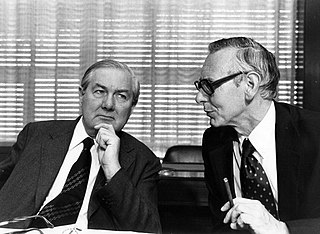
Liberian foreign relations were traditionally stable and cordial throughout much of the 19th and 20th centuries. During the 1990s, Charles Taylor's presidency and the First and Second Liberian Civil Wars underscored Liberian relations with the Western world, the People's Republic of China, and its neighboring countries in Western Africa.

In many countries, the ministry of foreign affairs is the government department responsible for the state's foreign policy and relations, diplomacy, bilateral, and multilateral relations affairs as well as for providing support for a country's citizens who are abroad. The entity is usually headed by a foreign minister or minister of foreign affairs. The foreign minister typically reports to the head of government.

Hawaiian Kingdom–United States relations refers to the historical relationship between the independent Hawaiian Kingdom and the United States. Relations included several treaties and exchanges of trade and diplomatic representatives from 1820 to 1893.

The United States has formal diplomatic relations with most nations. This includes all United Nations members and observer states other than Bhutan, Iran, North Korea and Syria, and the UN observer State of Palestine, the last of which the U.S. does not recognize. Additionally, the U.S. has diplomatic relations with Kosovo and the European Union.

Eleven United States presidents and three presidents-elect have made thirty-four presidential visits to Central America. The first visit by an incumbent president to a country in Central America was made in 1906 by Theodore Roosevelt. The trip, to Panama, was the first international presidential trip in U.S. history, and signaled the start of a new era in how presidents conducted diplomatic relations with other countries. In 1928, Herbert Hoover, during the time when he was president-elect, visited the region during his historic "good will" trip, to Central and South America.

Eleven United States presidents and one president-elect have made presidential visits to South America. The first trip was made by Herbert Hoover in 1928. During this tour he delivered twenty-five speeches in ten Central and South American countries, almost all of which stressed his plans to reduce American political and military interference in Latin American affairs. In sum, he pledged that the United States would act as a "good neighbor."

State and official visits to the United States are formal visits by the head of state or chief of government from one country to the United States, during which the president of the United States acts as official host of the visitor. State visits are considered to be the highest expression of friendly bilateral relations between the United States and a foreign state and are, in general, characterized by an emphasis on official public ceremonies.

The Chief of Protocol (CoP) is a government official who heads the protocol department of a state, overseeing security, logistics and etiquette in diplomatic and national functions. A protocol department decides on diplomatic immunity and privileges, diplomatic host security, diplomatic use of airspace and it is the guardian of official etiquette. Advance protocol teams, usually headed by the Chief of Protocol, engage as first contact between governments for the planning of bilateral and multilateral summits and visits.

Israel-Liberia relations refer to the bilateral relations between the State of Israel and the Republic of Liberia. Liberia was one of the United Nations member states to vote in favor of establishing a Jewish state in Palestine in 1947. Israel and Liberia established relations in the late 1950s. The administration of William Tolbert severed ties with the Israeli government in 1973 in response to the Yom Kippur War, but they were re-established in 1983 by Samuel Doe, who succeeded Tolbert via coup.









